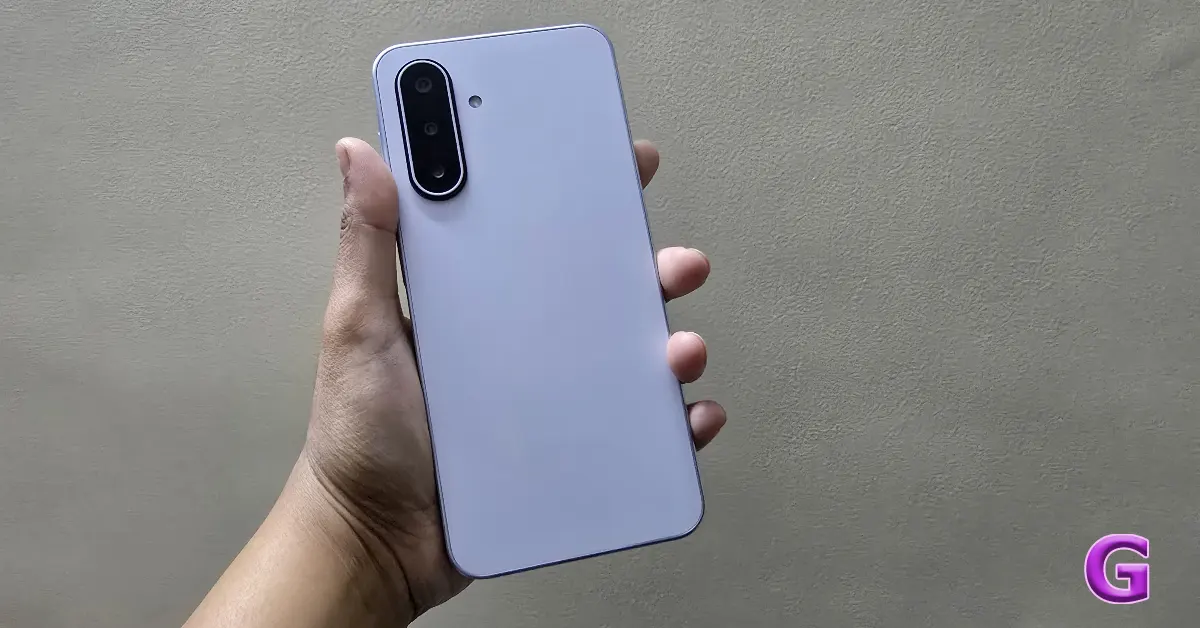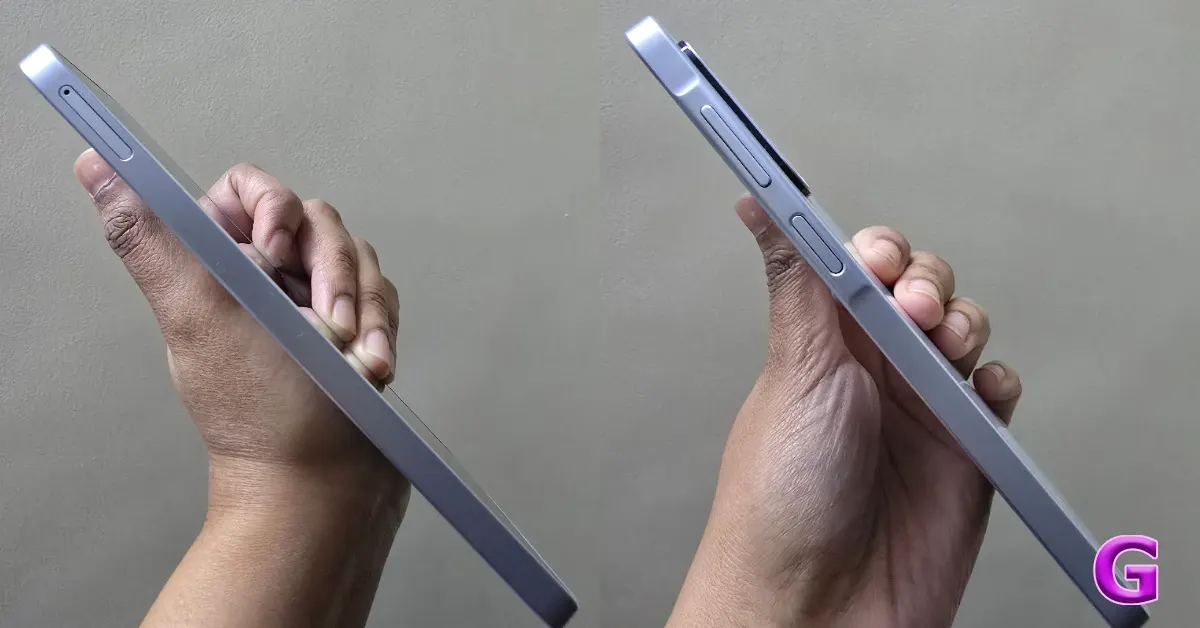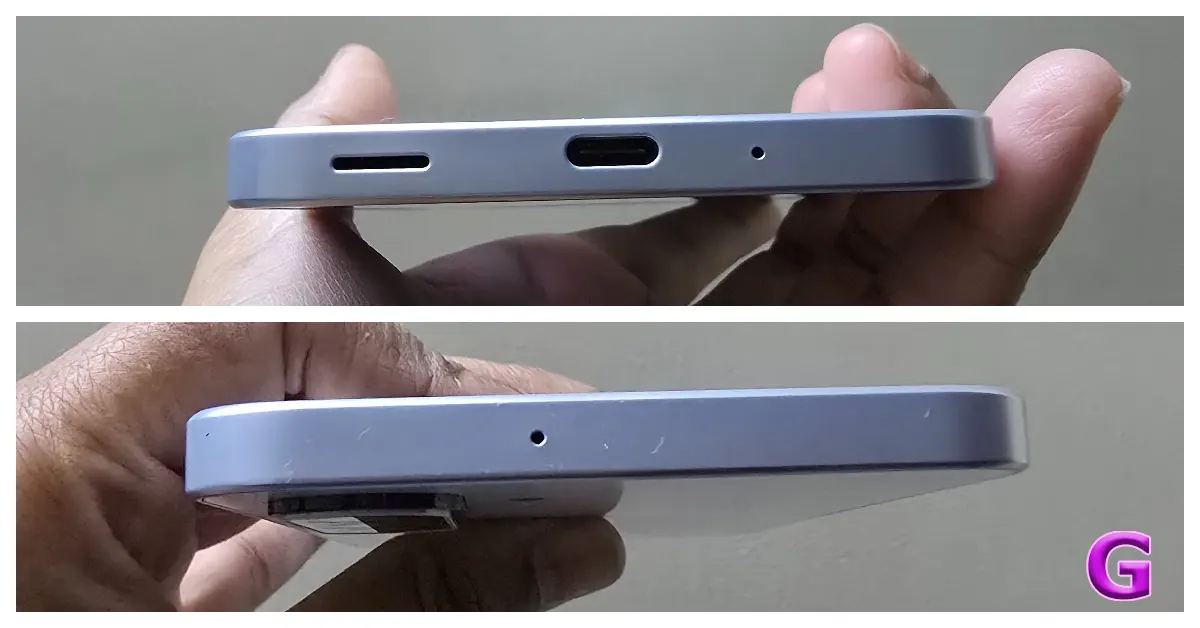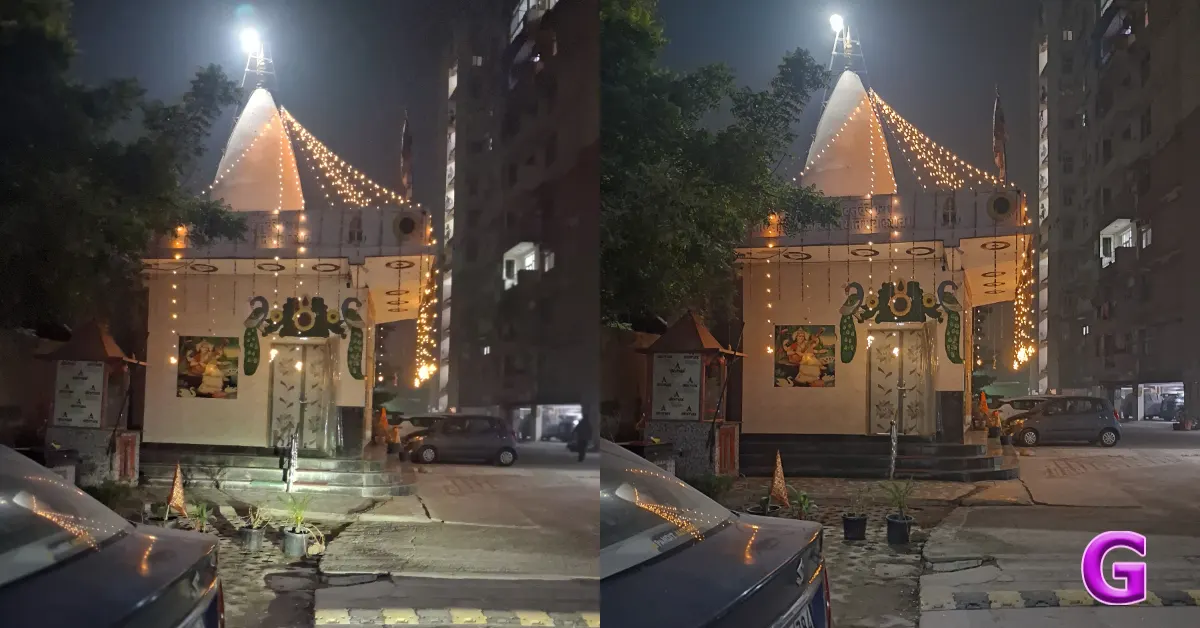Samsung unveiled the Galaxy M17 5G in India, targeting affordable smartphone users with a budget under Rs 15,000, who want premium features. It’s been our daily driver for the past few days, and we’ve been really satisfied with its performance. If you are searching for a budget smartphone in this price range, this gadget might be well worth the money. Check out our review of Galaxy M17 5G.
In This Article
Design and Display
The Samsung Galaxy M17 5G is a robust and sleek smartphone aimed at budget-friendly to midrange buyers.
In terms of design, this model maintains the M-series smartphones’ distinctive Samsung design style. With a thickness of only 7.5 mm, the phone’s entire form factor and construction highlight its compact profile, making it one of the most comfortable devices in its price category. Despite having a massive display and a substantial 5,000mAh battery, its weight of 192g makes it quite light.
The build, which is typical of low-cost Samsung smartphones, includes a plastic frame and back, which adds to its minimal aesthetic. It features a simple, minimalist appearance with a slight gradient finish that replicates the appearance of glass, while improving grip and reducing the likelihood of breakage.
Sapphire Black and Moonlight Silver are the two basic colours available for the phone; our review unit is in the latter colour.
The device’s big 6.7-inch Super AMOLED display, which delivers deep blacks and vibrant colours, is the main attraction of its front design and a major selling feature. Located in the upper centre of the display, the front camera is incorporated into a U-shaped notch known as an Infinity-U or waterdrop notch. We don’t mean to be picky, but many competitors have switched to the less noticeable hole-punch cutout, making the teardrop notch a little out of date.
Although the smartphone has very thin bezels on the top and sides, the bottom chin is still more noticeable than on flagship models, which can be an issue for customers who are looking for a more seamless visual experience.
The addition of Corning Gorilla Glass Victus, a premium protective feature usually seen in smartphones of the highest quality, significantly improves the design’s longevity. Additionally, the smartphone has an IP54 classification, indicating that it is resistant to dust and mild water splashes, making it appropriate for daily usage, including protection from light rain.
In order to improve comfort and hand grip, the rear panel has gently curved edges merging with the plastic frame.
Also Read: Honor X9c Review: How does it fare against tough competition in the midrange segment?
The camera module, which is located in the upper left corner, is highlighted by the back panel’s overall plain, basic design. The triple-rear camera system on the back panel is merged into a vertical, pill-shaped shell that slightly sticks out from the back panel. This module creates a visual contrast with the rest of the rear panel due to its slightly varied finish.
A fingerprint sensor on the side of the smartphone is integrated into the power button. The gadget has a USB Type-C connector that allows for data transfer and charging, but it noticeably lacks a 3.5mm headphone socket, which might be problematic for customers who prefer wired audio connections.
Getting back to the display, the Samsung phone boasts a 6.7-inch Super AMOLED screen with a maximum brightness of 1,100 nits for better visibility and a full-HD+ resolution of 1,080×2,340 pixels. Because of its high peak brightness capacity, the display functions well outdoors and gives consumers a comfortable viewing experience even in direct sunlight.
The display offers vivid colours, exceptional contrast, and deep blacks, as one could expect from a Super AMOLED panel. Making it a suitable device for streaming video content and engaging in multimedia.
The device’s 90Hz refresh rate significantly enhances the user experience by making tasks like navigating the One UI interface, scrolling through feeds, and switching between apps seem quicker and more fluid. However, it’s important to remember that several rivals in the same price range now have 120 Hz screens, which may provide an even better visual experience and are particularly helpful for people who play multiplayer games.
The phone has a single bottom-firing speaker that is loud enough for notifications and personal media. At normal volumes, the audio quality appears to be sufficient; at maximum volume, however, the sound may become distorted or slightly muffled, missing bass and depth. In general, the speaker may be used for casual purposes like watching films or answering calls. It is advised to utilise wired headphones that connect via the USB-C connection or wireless Bluetooth headphones for the best possible audio experience.
Performance and Cameras
Samsung’s mid-range Exynos 1330 chipset, which powers the Galaxy M17 5G, ensures strong performance appropriate for the requirements of 5G connectivity. It can accommodate up to 8GB of LPDDR4X RAM, which improves its ability to multitask. A microSD card may be used to expand the device’s 128GB of UFS 2.2 storage, giving customers more freedom and control over their media and data storage requirements.
The CPU is paired with the Mali-G68 MP2. The M17 5G provides a seamless and dependable experience daily, making it excellent for things like social media, online surfing, video streaming, and communication. However, in the affordable 5G market, the Exynos 1330 processor is competitive but lacks processing power when compared to rivals such as the Snapdragon 695, which produces somewhat better benchmark results in taxing workloads.
On the gaming aspect, the phone is appropriate for casual to medium gaming. As a result, it is not designed for competitive high-graphics games. Popular titles, such as Call of Duty: Mobile, may run successfully at medium to high graphics settings, with decent frame rates.
Furthermore, the phone’s 5 nm manufacturing process adds to good thermal performance, minimising excessive heating during extended gaming sessions.
Also Read: Vivo V60e Review: Midrange Maverick
The Samsung Galaxy M17 5G offers a compelling software experience, thanks in large part to its dedication to long-term upgrades. This device runs Android 15, with Samsung’s proprietary One UI 7 (or One UI Core 7), which is especially built for best performance on mid-range hardware. One UI offers a clean and feature-rich user interface with several customisation options and one-handed functionality.
The Galaxy M17 5G is going to receive up to six editions of Android OS updates, including Android 21. Furthermore, Samsung offers six years of security upgrades, with coverage until September 2031. This dedication means that the Galaxy M17 5G is highly future-proof, with customers having access to the most recent Android features, performance enhancements, and security patches for many years.
Aside from that, Samsung has included various advanced artificial intelligence (AI) features generally seen in its flagship models, which improve the device’s usability and usefulness. These features are Circle to Search with Google, Knox Vault (Enhanced Security), Voice Focus, and On-Device Voicemail.
The most recent Galaxy M-series model features a new triple rear camera system designed to increase photography skills. The primary camera boasts an impressive 50-megapixel resolution and employs Optical Image Stabilisation (OIS) and Auto-Focus (AF) to improve image quality and stability.
This is supplemented with a 5-megapixel ultrawide camera with 123 degrees of field of vision, which gives a broader field of vision, and a 2-megapixel macro camera, which is designed to catch fine details at close range. The device also has a front-facing 13-megapixel selfie camera, which is purposefully placed within a teardrop notch at the top of the display.
Under daylight, the primary camera performs admirably, producing brilliant yet realistic colour tones that are consistent with Samsung’s signature style. The photographs are not oversaturated, and the natural hues, especially in greenish, reddish and vibrant yellows, add to the authenticity of the photographic result.
The pictures are well-detailed and perform exceptionally in strong direct sunlight. It navigates high-contrast images with ease, expertly managing the shift between bright sky and dark shadows, exhibiting its impressive dynamic range.
Also, owing to OIS support, the user experience is substantially improved by reducing the possibility of losing detail, which is a typical issue caused by little handshakes.
Additionally, it improves photography and videography, especially in low-light conditions. However, even with OIS, photos recorded in low-light or poorly illuminated indoor conditions will still have visible noise or grain. Which, we think, will be taken care of in the next few updates by Samsung.
Finally, there’s the ultra-wide camera. We did notice a significant reduction in detail as compared to the primary camera, especially in low-light circumstances, when the photographs are softer and have higher noise levels. In addition, colour reproduction is inconsistent between the primary camera and the ultra-wide lens, indicating that colour matching could have been better.
The selfie camera performs well in daylight, capturing outstanding face detail and accurate skin tones. This makes it ideal for selfies and video calls.
The Samsung Galaxy M17 5G has excellent battery performance, with exceptional endurance and efficient processing technologies. It can survive a full day with moderate to heavy use and still have enough battery by evening. Lighter operations, such as calling and browsing the internet, may allow the device to last another day. However, one disadvantage is the 25W charging speed, which requires the purchase of a separate charging brick.
Also Read: Infinix Smart 10 Review: A wonderful phone with AI features under 7k
Verdict
Samsung’s M17 5G handset has various premium features, including a Super AMOLED display, Gorilla Glass Victus, an OIS camera, and an extensive 6-year software update guarantee. These features increase its long-term worth, establishing it as a better option despite not having the most powerful chip on the market.
The Exynos 1330 can handle nearly all of the user’s tasks efficiently, making it an appropriate choice for the average customer. However, power users and hardcore mobile gamers may see its performance as rather limited, implying that it may not match the high expectations of those wanting top-tier gaming experiences or demanding multitasking capabilities. It is best suited for casual gamers, users who like to watch content and people who want a very-very long battery life without any hiccups.
Pros
- Simple and minimal design
- Long battery life
- Massive screen
- AI features
Cons
- Not ideal for heavy gaming
- 3.5mm jack is missing
- Lacks a charger











